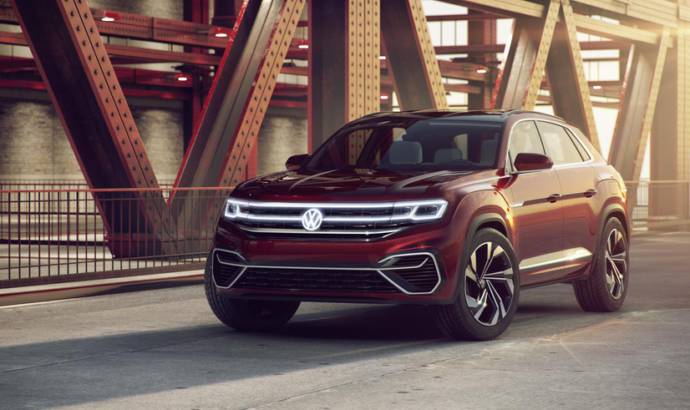After the recent launch of the new generation Touareg in China, during Beijing Motor Show, Volkswagen is crossing the Ocean with two new world premieres, ready for the New York Auto Show. There are two concept version of the current Atlas.
With its hybrid drive and a coupé-like rear body design, the five-seat, near-production Atlas Cross Sport was developed for use in metropolitan areas like New York or San Francisco.
The Atlas is a successful newcomer in the SUV market in the USA. More than 36,000 units have already been sold since it was launched on the market last year.
The decision has already been made to manufacture the production version of the Atlas Cross Sport at the US plant in Chattanooga (Tennessee) together with the seven-seat Atlas and the Passat. Volkswagen will invest around 340 million US dollars in the new SUV’s market launch – in addition to investments of around 900 million US dollars already made to expand the plant for Atlas production.
Like the seven-seat Atlas, the new five-seater is also based on the modular transverse matrix (MQB). The Atlas Sport Cross impresses with a sporty rear body in coupé style and a plug-in hybrid drive (PHEV) with an all-electric driving range of 70 kilometers (NEDC) or 26 miles (EPA). Its high-performance battery can be charged either externally or while driving.
A second version of the Atlas Cross Sport has a conventional hybrid drive without an external battery charging function (HEV). This version can also be driven temporarily in an all-electric mode (electric range approx. 2.5 kilometers or 1.5 miles). Both models have all-wheel drive (4MOTION with electric propshaft).
The gasoline powered model has a 3.6 FSI V6. The six-cylinder engine produces 280 PS of power; its maximum torque is 350 Nm. This engine is assisted by two electric motors in both versions. The front motor develops 40 kW and 220 Nm and the rear motor 85 kW and 270 Nm. It is supplied with energy that comes from a compact lithium-ion battery mounted in the transmission tunnel. Its energy capacity – and this is where the PHEV and HEV differ – is either 18.0 kWh (PHEV) or 2.0 kWh (HEV). The total system power of the two drive systems: 360 PS (PHEV) and 314 PS (HEV).





